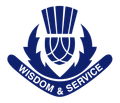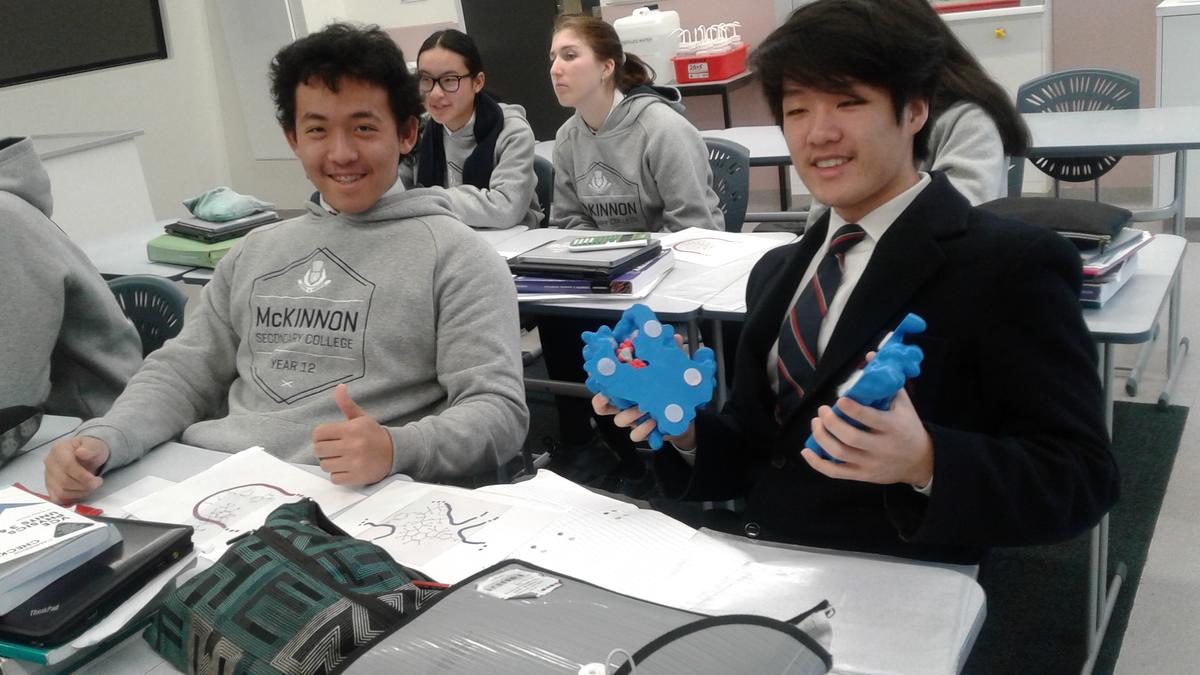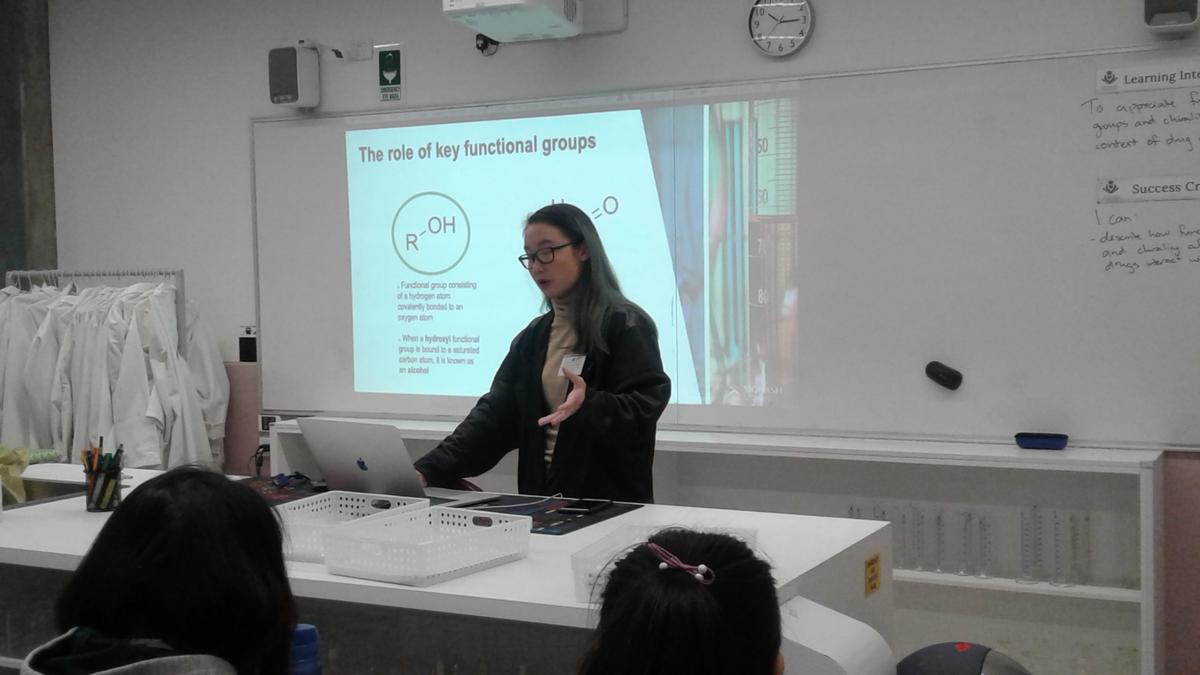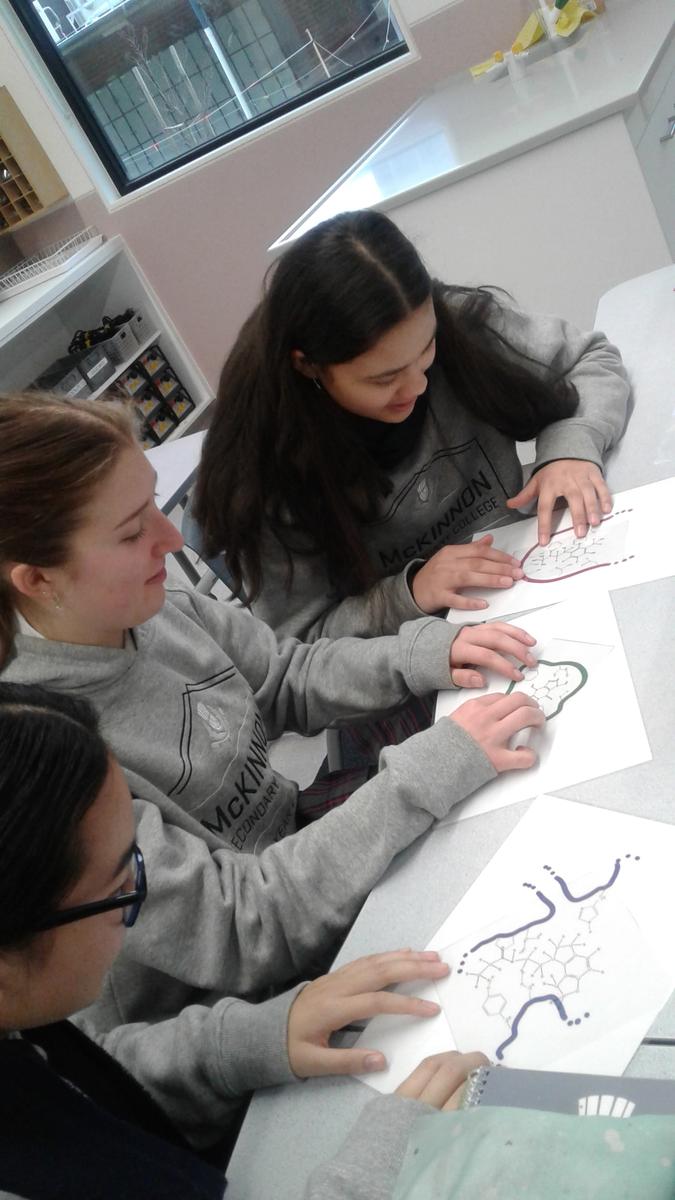SCIENCE
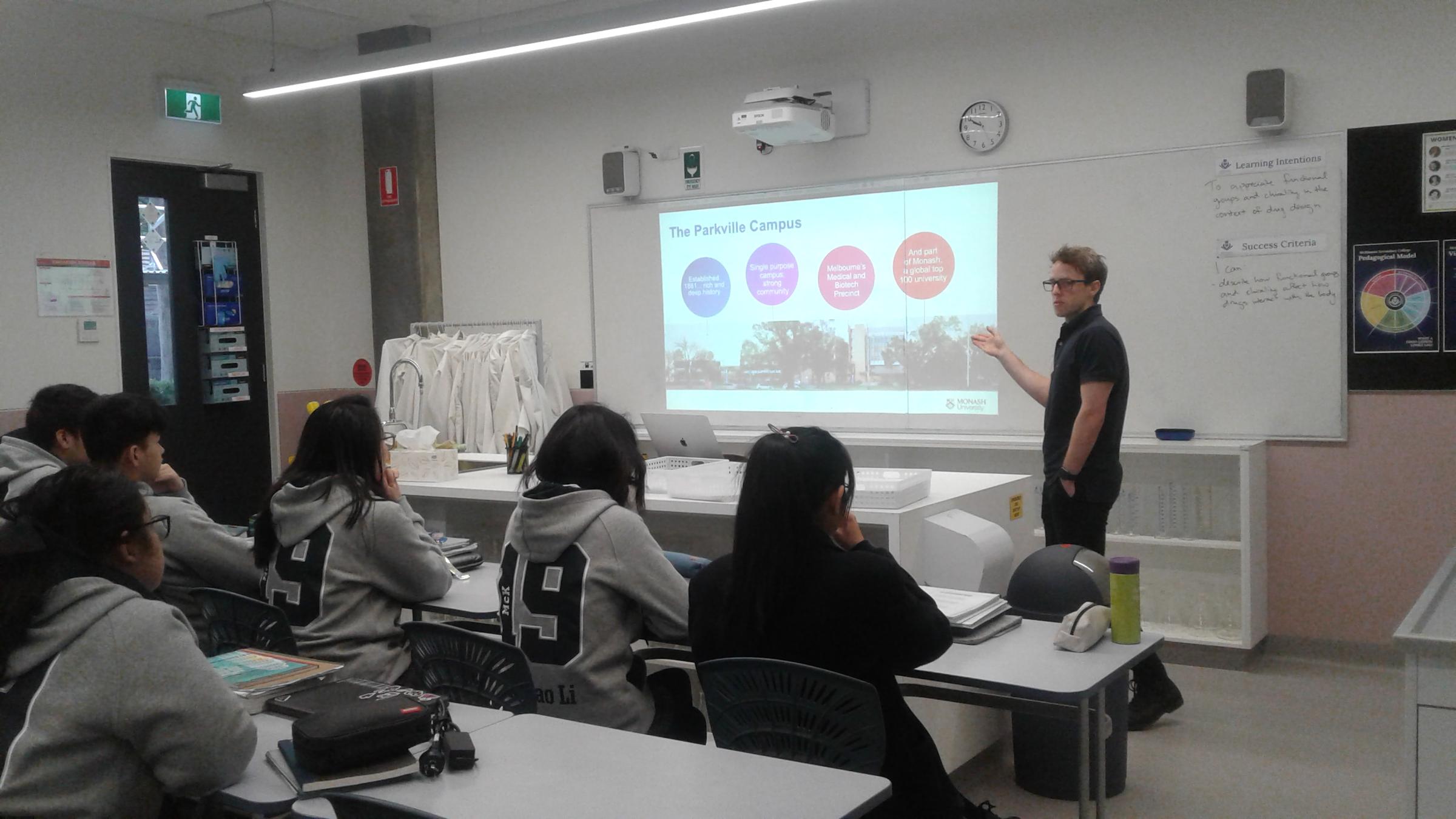
MONASH UNIVERSITY PHARMACY WORKSHOPS WITH YEAR 12 CHEMISTRY
Last week Monash PhD candidates Josh Rennick and Beatrice Chiew conducted one period workshops with each of the Year 12 Chemistry classes at McKinnon.
During the workshops, our students applied their understanding of different functional groups and chirality to the context of medicines.
They learnt about the role functional groups play in drug delivery and the activity of medicine and applied intermolecular bonding concepts to the interactions between medicines and protein binding sites. Our students also witnessed how the chirality of a medicine molecule affects its ability to bind to receptors in the body.
The presenters also gave an overview of the courses offered by the Monash Pharmacy Department.
A few thoughts from our students:
The session greatly mirrored the Women's Day in Chemistry when we went to Parkville during Women's International Week. It was an interesting introduction to begin considering a career in pharmacy or pharmaceutical sciences. I liked the more hands-on approach and I believe that it's a worthwhile session to have.
Erika
The guest speakers allowed me to become cognisant of the world of pharmaceutical science as well as the way in which pharmacists operate in their day to day job. This eye opening experience undeniably reinforced the notion that the Monash Parkville campus contains the capabilities to produce individuals that are able to demonstrate great expertise in their area. The wealth of resources and support the guest speakers detailed further substantiated this idea, revealing the Parkville campus itself is very well equipped to develop young Australians.
Tom
During the incursion, I learnt about how different polar molecules bind to each other and how different non-polar molecules bond together. How the different molecules have active sites that bind to the molecules, which causes our sense of smell. For the future I need to work more on my bonds and how they work. Overall they were helpful and it was an interesting activity, teaching me many facts about pharmaceuticals and a lot of information about their university.
Michael
During this lesson I learnt about the differences between pharmacy and pharmaceutical sciences and the importance that each of these roles have on our public health system.
I also learnt about how different drugs administered will bind to specific receptors based on their chirality and that they have a specific position they must be in, in order for them to have an effect.
Anna
At the lecture I learnt that Monash University is not only third in the world in their pharmacy degrees but after a 5 year pharmacy course you also graduate with a master's in pharmacy.
Daniel
From Tuesday’s visitors, I was fascinated with the courses of pharmacy and pharmaceutical sciences, and what career paths they provided. I also learnt also how pharmaceutical drugs were absorbed, and how chirality of molecules affect the specificity of which drugs can affect different parts of the body.
Eliza
On Tuesday I learnt that there are some cafes up the road from the Monash campus next to the zoo. It's a very small campus but that doesn't take away from how fun it is. I also learnt that some of the courses in pharmacy require an ATAR of 90.
Jason
During the guest speakers visit I learned quite a bit about how medicines work and their production, as well as the role of pharmaceutical sciences. I learnt about hydrophilic and hydrophobic properties. Also it was interesting hearing about the Monash campus in the city.
Cameron
Therese Sweeney & Fiona Wallis
Science Faculty
WATER GLOBAL HUMAN ENDEAVOUR TASK - YEAR 7 SCIENCE
In Year 7 Science we’ve been learning about the special chemical and physical properties of water, as well as how essential clean drinking water is. As part of the practical component of the course, we had to design and construct a water filter. The water filter had to be made at home using materials found around the house, and had to be easily portable.
Our group used an empty 600ml water bottle and constructed layers using sand, pebbles and a coffee filter at the bottom. We brought these filters to class and tested their effectiveness by filtering a random sample of dirty water given to us by Miss Marks. The dirty water contained lots of insoluble solids such as large rocks, mud, sand and plastic. It also had vinegar and blue food dye mixed through it. After 20 minutes of filtering our group had obtained 80% of the water and it was much clearer, though it was still blue from the dye. We concluded that although it was less turbid than the original sample, it was still not potable (drinkable) as it could contain contaminants that are not easily removed by the filter.
We loved building these filters as it gave us an appreciation of how the theory we learn in class is applied in everyday life. It also made us realise the importance of universal and equitable access of clean, drinking water.
7A Science
